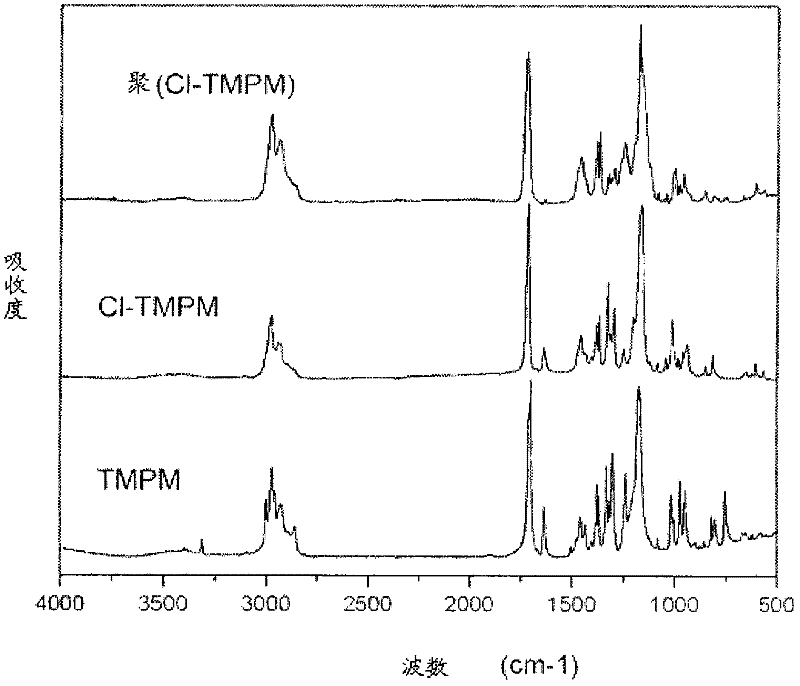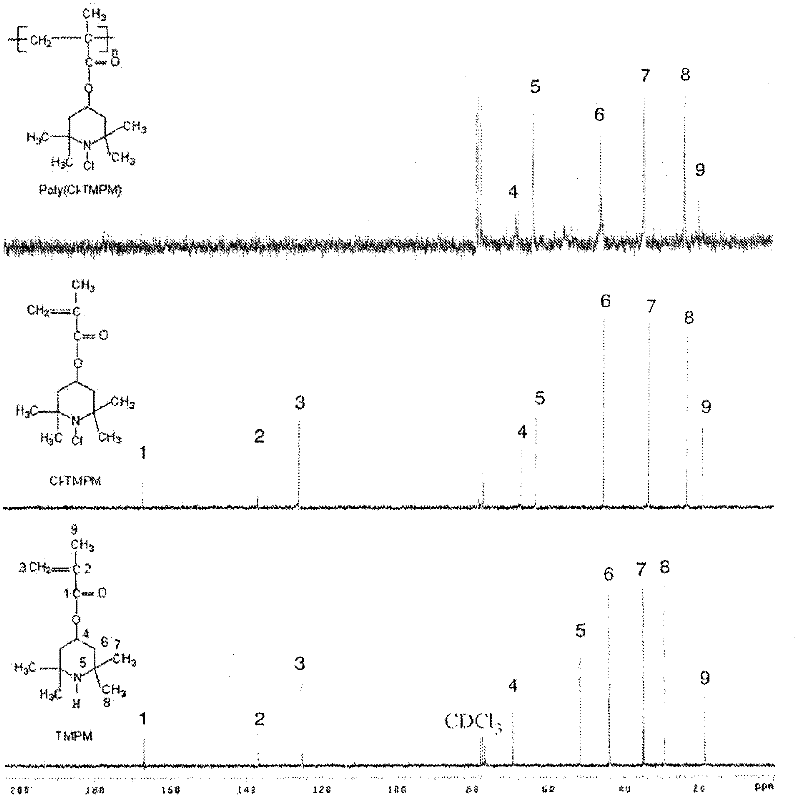Antimicrobial polymers and coatings
An antibacterial composition and polymer technology, applied in animal repellents, plant growth regulators, botany equipment and methods, etc.
- Summary
- Abstract
- Description
- Claims
- Application Information
AI Technical Summary
Problems solved by technology
Method used
Image
Examples
preparation example Construction
[0051] The present invention has developed a new process for the preparation of polymeric N-halamines in which a halogenated monomer is polymerized rather than polymerized and then halogenated as is normally employed. An advantage of the new method is that the monomers are liquid at room temperature, which means that the monomers can be homogeneously dispersed in water even in the presence of conventional emulsifiers, forming stable emulsions that are readily polymerizable to form poly(Cl- TMPM) latex emulsion, and the new poly(Cl-TMPM) emulsion can be directly used for antibacterial, without the "irradiation under halogen source" step required by the traditional "post-halogenation" method to prepare polymeric N-halamines. In other cases, pre-halogenated monomers may have different solubility in commonly used solvents, or have other different physical / chemical properties compared to the original unhalogenated monomers, all of which can be used to change / modify / improve Process ...
Embodiment
[0068] raw material
[0069] Ammonium persulfate ((NH 4 ) 2 S 2 o 8 ), 2,2,6,6-tetramethyl-4-piperidinyl methacrylate (TMPM), sodium dichloroisocyanurate (DCCANa) and dioctanoic sodium sulfosuccinate (DSS), received Use immediately. The microorganisms Staphylococcus aureus (S.aureu, ATCC 6538), Escherichia coli (E.coli, ATCC 15597), Methicillin-resistant Staphylococcus aureus (MRSA, ATCC BAA-811) obtained from the American Type Culture Collection (ATCC), Vancomycin-resistant Enterococcus faecium (VRE, ATCC 700221), Candida tropicalis (C. tropicalis, ATCC 62690), Staphylococcus papillosa (S. chartarum, ATCC 34915) and MS2 virus (ATCC 15597-B1).
[0070]Materials used included cotton fabrics (available from Testfabrics Inc.) that were washed with acetone to remove impurities prior to use. 2,2,6,6-Tetramethyl-4-piperidinylmethacrylate (TMPMA) (Wako chemicals Inc.) was purified by precipitation from acetone solution into water. Escherichia coli (E. coli, ATCC 15597), Staphy...
PUM
| Property | Measurement | Unit |
|---|---|---|
| Melting point | aaaaa | aaaaa |
| Melting point | aaaaa | aaaaa |
| Melting point | aaaaa | aaaaa |
Abstract
Description
Claims
Application Information
 Login to View More
Login to View More - R&D
- Intellectual Property
- Life Sciences
- Materials
- Tech Scout
- Unparalleled Data Quality
- Higher Quality Content
- 60% Fewer Hallucinations
Browse by: Latest US Patents, China's latest patents, Technical Efficacy Thesaurus, Application Domain, Technology Topic, Popular Technical Reports.
© 2025 PatSnap. All rights reserved.Legal|Privacy policy|Modern Slavery Act Transparency Statement|Sitemap|About US| Contact US: help@patsnap.com



